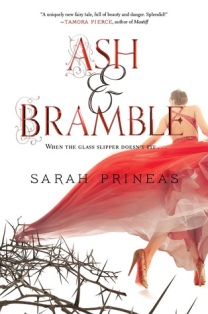You guys, I’m so excited. Literature reflects our society, whether that literature takes place in modern-day America, on the moon, or in a made-up world.
Which is why I’m so pleased to see gay and queer characters sprinkled throughout the young adult novels I’ve been reading. It’s not that this in itself is now- but it’s how it’s being done.
Just like including people of color or people with disabilities or other people who get less representation in fiction, there’s a right and a wrong way to write a queer character. I’m excited because I happened across two novels in a row with queer characters where:
- Being gay or queer wasn’t their only character trait, or even their central character trait.
- Like every character should do in a well-crafted story, they supported the central theme of the story and/or added a richer dimension to the novel’s world.
This kind of writing is exciting to see in any genre, but I’m most excited that I’m seeing it more in historical fiction and fantasy. The kinds of historical fiction and fantasy that feel the most rich and realistic include a wide cast of characters. Why would every person in a fantastical world be straight? And were there only straight people living in the past? Certainly not.

*sigh* Just ignore the fact that the cover has yet another White Girl in a Prom Dress…
I recently finished Ash & Bramble by Sarah Prineas, a novel that deconstructs the idea of fairy tales and what happens when we go against the fate that “Story” has planned for us. It’s a fascinating allegory for creating your own path in life and going against societal expectations.
The main character, Pin, encounters two women who support this theme, Templeton and Zel. Neither of them followed the expectations that a fairy tale had in mind, and Templeton tells about how they subverted the classic “Rapunzel” story.
Templeton tells Pin:
“So the Godmother’s got the prince all picked out. He’ll climb up the tower, rescue her, true love, the end. Doesn’t matter what the prince really wants, or the pretty doll really wants. This is Story at work, you see? … But I got there first. I’d been visiting every night. Zel grew her hair out long as a rope.” She gives her arm muscles a proud flex. “We fell in love, and we wanted to be together, no matter Story’s intentions. So I became a storybreaker.” (341-42)
Templeton goes on to talk about how she climbed up the tower, cut off Zel’s hair, and had a scuffle with the prince. Subverting a heteronormative love story serves as a perfect example of rebelling against Story’s (and society’s) expectations of what should happen.
I might have cheered and punched the air at this passage when I read it. Honestly, I should just write a blog post devoted to Ash & Bramble, because the novel is thoughtfully constructed and there are lots of fascinating thought puddles to dive into.

This cover is so pretty…that font! *grabby hands*
Rae Carson’s most recent novel, Walk on Earth a Stranger, isn’t entirely historical fiction, as there’s a magical element, but other than the main character’s ability to sense when gold is near, the world is a very realistic 1849.
Lee escapes a dangerous situation in her hometown in Georgia, disguising herself as a boy to join a wagon trail to California.
Carson certainly did her historical research, which makes the journey come to life. She highlights the expectations of women, which turned into deadly dangers on the trail, as illustrated by one woman who undergoes a dangerous birthing process in Death Valley.
Lee disguises herself as a boy to avoid detection and to make her journey easier. Many of the people on the wagon trail are going to California to seek their fortunes, but Carson writes about other reasons why people braved the trail. Lee’s otherness isn’t missed by two men from Mississippi, who mistake her for one of their own:
“‘What do you mean I’m one of you?’
‘A confirmed bachelor. San Francisco is a new world, with more money than laws. There’s a place for us there. To live the way we want to live, without interference.’
[…] Jasper must trust me completely to be so frank. Or maybe secrets have a way of making people so lonely that they eventually take a risk on someone” (312-313).
The “confirmed bachelors'” (a term which, Rae Carson notes at the end, may or may not have been used in America during this time, although it was certainly used by their British contemporaries) desire to create a new life and identify for themselves underlines this central theme in the story, enriching Lee’s personal story and making the world feel more organic and alive.
The portrayals in both of these novels are well-done, although there is always the danger of using underrepresented groups in stories to back up the main, straight, cis-gendered, white person’s journey or perspective. I think, though, that these characters mentioned above are a step in the right direction.
Ultimately, I hope to go into a bookshelf and see a diverse mix of novels, to see stories with queer people or people of color as the main characters in stories that don’t center on that part of their identity.
The call for more diverse stories, and by extension more diverse writers, publishers, and editors, is becoming more and more vocal, and I don’t think it’s a coincidence that YA literature is paving the way for more diverse stories. YA literature continues to dominate the book market, and I think – I hope – that it will lead in progress as well as sales.
What do you think? Is YA succeeding in diverse portrayals, or is there more work to be done?